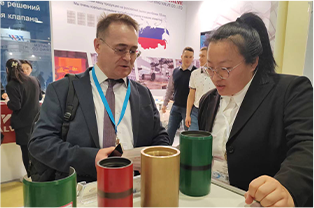- Afrikaans
- Albanian
- Amharic
- Arabic
- Armenian
- Azerbaijani
- Basque
- Belarusian
- Bengali
- Bosnian
- Bulgarian
- Catalan
- Cebuano
- Corsican
- Croatian
- Czech
- Danish
- Dutch
- English
- Esperanto
- Estonian
- Finnish
- French
- Frisian
- Galician
- Georgian
- German
- Greek
- Gujarati
- Haitian Creole
- hausa
- hawaiian
- Hebrew
- Hindi
- Miao
- Hungarian
- Icelandic
- igbo
- Indonesian
- irish
- Italian
- Japanese
- Javanese
- Kannada
- kazakh
- Khmer
- Rwandese
- Korean
- Kurdish
- Kyrgyz
- Lao
- Latin
- Latvian
- Lithuanian
- Luxembourgish
- Macedonian
- Malgashi
- Malay
- Malayalam
- Maltese
- Maori
- Marathi
- Mongolian
- Myanmar
- Nepali
- Norwegian
- Norwegian
- Occitan
- Pashto
- Persian
- Polish
- Portuguese
- Punjabi
- Romanian
- Russian
- Samoan
- Scottish Gaelic
- Serbian
- Sesotho
- Shona
- Sindhi
- Sinhala
- Slovak
- Slovenian
- Somali
- Spanish
- Sundanese
- Swahili
- Swedish
- Tagalog
- Tajik
- Tamil
- Tatar
- Telugu
- Thai
- Turkish
- Turkmen
- Ukrainian
- Urdu
- Uighur
- Uzbek
- Vietnamese
- Welsh
- Bantu
- Yiddish
- Yoruba
- Zulu
vacuum hose coupling
Understanding Vacuum Hose Couplings A Comprehensive Overview
Vacuum hose couplings are essential components used in various industrial and automotive applications to connect vacuum hoses securely and efficiently. These couplings ensure that vacuum pressure is maintained, preventing leaks that can lead to system inefficiencies or failures. In this article, we will explore the importance, types, and applications of vacuum hose couplings.
Importance of Vacuum Hose Couplings
In any vacuum system, maintaining a consistent and reliable seal is crucial. Vacuum hose couplings play a pivotal role in this process by connecting sections of the hose and other components while ensuring an airtight seal. A proper coupling prevents the escape of air, thereby maintaining the vacuum necessary for optimal functioning. Without effective couplings, systems can suffer from reduced efficiency, potential contamination, and increased operational costs.
Types of Vacuum Hose Couplings
There are several types of vacuum hose couplings available, each designed for specific applications and requirements
1. Barb Couplings These are the most common type of couplings used in vacuum systems. They feature a barbed end that grips the hose tightly, ensuring a secure fit. Barb couplings are suitable for use with flexible hoses and are convenient for quick installations.
2. Clamp Couplings These couplings incorporate a clamp mechanism that holds the hose tightly against the coupling. They are particularly useful in high-pressure applications and where enhanced security is necessary. Clamp couplings can be made of various materials, including stainless steel or plastic.
3. Threaded Couplings Designed for a more permanent solution, threaded couplings screw into place, providing a lasting connection. They are often used in industrial setups where durability and stability are paramount.
4. Quick Disconnect Couplings As the name suggests, these couplings allow for fast and easy attachment and detachment of hoses. They are particularly valued in applications where hoses need to be frequently changed or serviced.
vacuum hose coupling

5. Flanged Couplings These couplings use flanges to create a secure connection. They are commonly found in large systems where robust connections are required to withstand high vacuum levels and physical stress.
Applications of Vacuum Hose Couplings
Vacuum hose couplings are used in a variety of settings, including
- Automotive In vehicles, these couplings can be found in systems related to exhaust, fuel management, and emissions control, where they help maintain the necessary vacuum levels for optimal engine performance.
- Industrial Manufacturing Vacuum systems are widely used in manufacturing processes such as packaging, material handling, and mold-making. Reliable couplings ensure efficient operations and minimize downtime.
- Laboratories In scientific research, vacuum systems are essential for conducting experiments and tests that require controlled environments. The integrity of vacuum systems depends heavily on the quality of hose couplings.
- Household Appliances Many modern appliances, such as vacuum cleaners and food processors, employ vacuum technology and require effective couplings to function correctly.
Conclusion
In conclusion, vacuum hose couplings are vital components that facilitate the efficient operation of vacuum systems across various industries. Understanding the different types and their applications can help businesses and individuals make informed decisions about their vacuum needs. By investing in quality couplings, one can ensure the reliability and durability of vacuum systems, ultimately leading to improved efficiency and performance. Whether you're in automotive, manufacturing, or scientific research, choosing the right vacuum hose coupling is essential for success.
-
Tubing Pup Joints: Essential Components for Oil and Gas OperationsNewsJul.10,2025
-
Pup Joints: Essential Components for Reliable Drilling OperationsNewsJul.10,2025
-
Pipe Couplings: Connecting Your World EfficientlyNewsJul.10,2025
-
Mastering Oilfield Operations with Quality Tubing and CasingNewsJul.10,2025
-
High-Quality Casing Couplings for Every NeedNewsJul.10,2025
-
Boost Your Drilling Efficiency with Premium Crossover Tools & Seating NipplesNewsJul.10,2025







